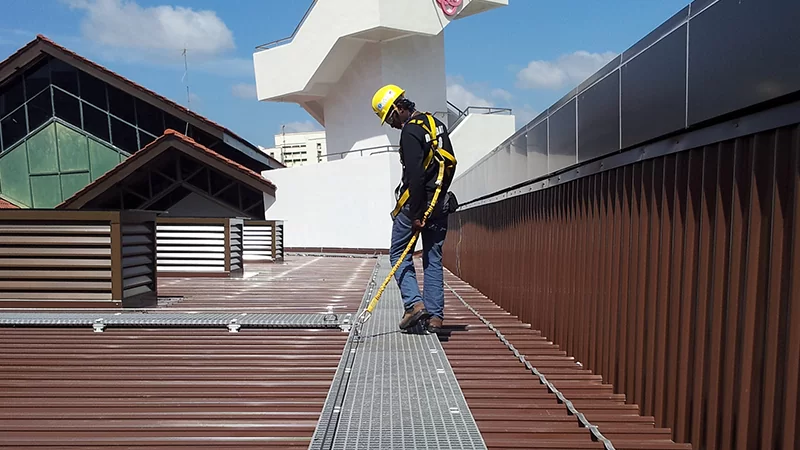
When it comes to working on rooftops in the Philippines, safety should always be the top priority. Whether it’s maintenance personnel conducting repairs or workers accessing rooftop installations, ensuring a secure, slip-resistant, and stable path is essential. In this blog post, we’ll delve into the world of roof walkways and anti-slip solutions, exploring their significance in the Philippines’ unique environment.
II. Understanding Roof Walkways
Roof walkways, also known as rooftop anti-slip walkway systems, are engineered solutions designed to create safe, stable, and level walking and working surfaces on rooftops. These systems serve a vital role in preventing accidents, reducing damage to the roof surface, and ensuring compliance with safety regulations, all of which are particularly important in the Philippines.
III. Benefits of Roof Walkway Solutions
- Ensuring Safety: Roof walkways are paramount for the safety of anyone working on rooftops. They provide a secure path, preventing slips and falls, especially in wet or icy conditions.
- Protecting the Roof: By offering a designated path, roof walkways minimize unnecessary wear and tear on the roof surface, extending its lifespan and reducing maintenance costs.
- Compliance: Roof walkways help companies adhere to safety regulations and standards, ensuring a safer working environment.
IV. Types of Roof Walkway Systems
Roof walkway systems come in various forms, each with unique features and advantages. Let’s explore two common material options:
V. Aluminum Walkways
- Durable and Non-Corrosive: Aluminum walkways are known for their durability and resistance to corrosion.
- Lightweight and Easy Installation: They are lightweight, making installation over new or existing structures a breeze—no welding required.
- Aesthetic Appeal: Aluminum 6063 mill finishing ensures an outstanding aesthetic on your rooftop.
VI. Fiberglass Walkways
- Non-Corrosive: Ideal for corrosive environments, such as petrochemical industries, water treatment facilities, and marine vessels.
- Strength and Lightweight: Despite being lighter than aluminum, fiberglass walkways are incredibly strong.
- Fire Retardant: They offer fire retardancy, further enhancing safety.
VII. Installation and Configuration
Roof walkways can be customized to suit various roof surfaces, including metal decks, standing seam roofs, concrete, and more. Guardrails can also be added for extra safety. Installation is straightforward, with options for non-penetration fixing systems.
VIII. Use Cases and Applications
Roof walkways find applications in a wide range of industries across the Philippines and Asia. From industrial facilities to commercial buildings, these systems play a pivotal role in ensuring safety and accessibility. Here are some real-world examples and case studies.
IX. Maintenance and Longevity
To ensure the longevity of your roof walkway system, regular maintenance is essential. This section provides tips and insights into proper upkeep, highlighting the cost-effectiveness and return on investment of these systems.
X. Safety Standards and Compliance
In the Philippines, adherence to safety regulations is crucial. Learn about the regulations and standards governing roof walkways and why compliance is a must.
Conclusion
Roof walkways in the Philippines are more than just safety measures; they are investments in the well-being of workers and the protection of valuable assets. By choosing the right material and ensuring proper installation and maintenance, you can walk on air with confidence, knowing that your rooftop is secure.
